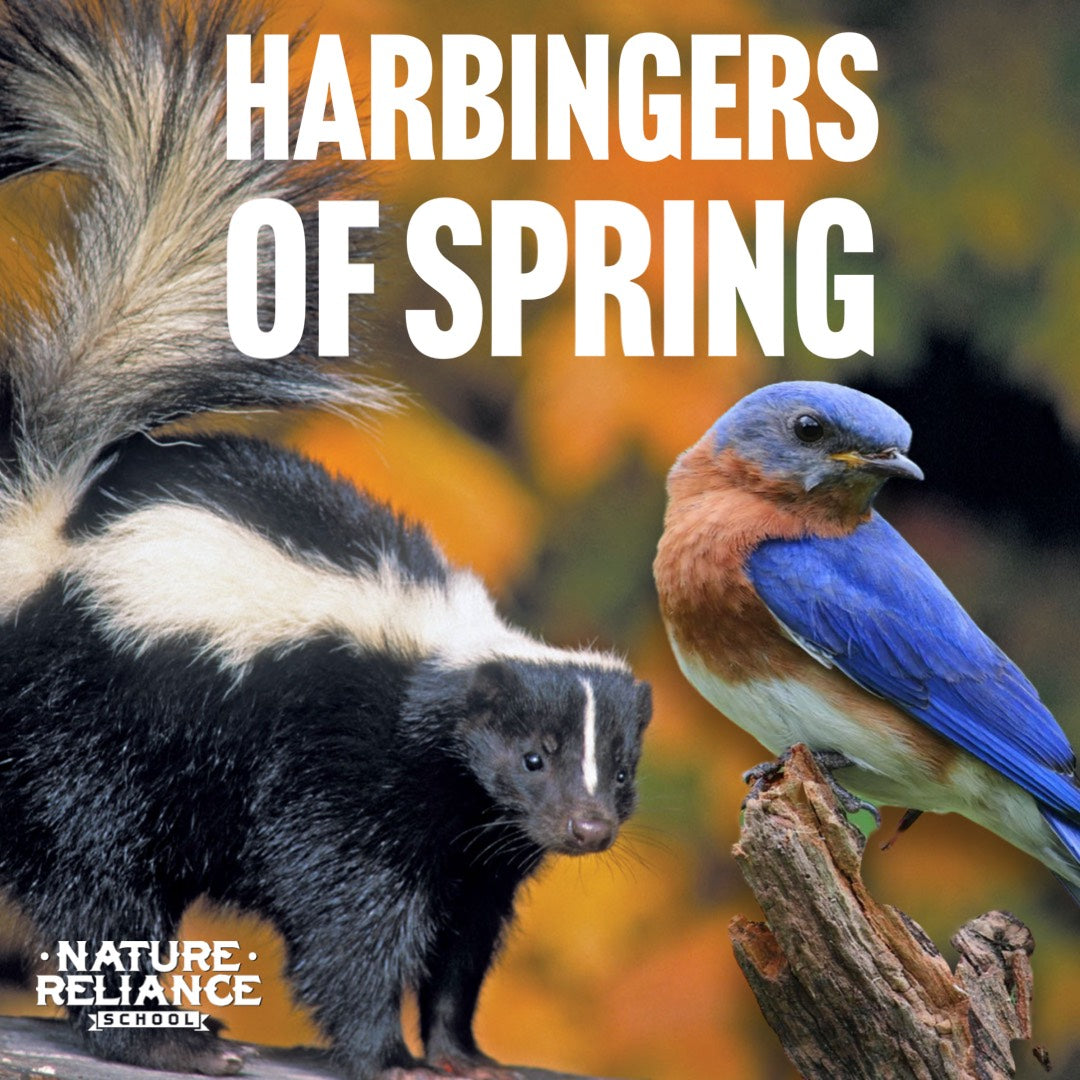
Harbingers of Spring - Skunks and Bluebirds
Harbingers of spring is a blog piece I make an attempt to write every year. Every year it is something different. What I mean is on my daily tracking treks, I pay attention to my surroundings. When I get that first hint that something is telling spring is "around the corner" I make not of it. This year was special in that two happened on the same day. Tracker (my dog) and I go out nearly every morning to exericse, track and generally just enjoy the great outdoors. On our drive to our favorite wooded area, I noticed 3 dead skunks on the road. This was my first sign of spring, let me explain.
As the chill of winter begins to thaw and the first signs of spring emerge, the natural world awakens from its slumber in myriad ways, not least of which can be observed in the mating habits of skunks. These nocturnal creatures, often maligned for their pungent defense mechanism, engage in a fascinating and complex mating ritual that heralds the arrival of spring. Skunks, particularly the common striped skunk (Mephitis mephitis), emerge from their winter dormancy to partake in their annual breeding season, which typically occurs from late February through March. This period of increased activity not only signifies a pivotal shift in their lifecycle but also serves as a subtle indicator that spring is on the horizon.
Skunk mating rituals are unique and involve a variety of behaviors that signal their readiness to reproduce. Male skunks begin their search for mates by venturing out of their dens and traveling significant distances, often covering several miles in a night. Their quest for a partner is driven by a sharp increase in testosterone levels, which also makes them more visible during this time. Males will compete for the attention of females through displays of dominance and may even engage in physical confrontations. Female skunks, on the other hand, are selective and will only accept advances from the most dominant males. Once a pair is formed, mating occurs, and the male moves on, potentially mating with several females throughout the season. This promiscuous behavior maximizes reproductive success and ensures a wide genetic diversity within the skunk population.
ThWhile fascinating in their own right, the mating habits of skunks so play a larger role in the tapestry of seasonal change. The increased visibility of skunks during their mating season serves as a natural indicator that the cold, barren days of winter are giving way to the warmth and renewal of spring. Their activity encourages the thawing ground to come back to life, inviting a chorus of birds and the bloom of early spring flowers. Moreover, skunks' role in controlling insect populations becomes crucial as they emerge hungry from their winter dens. As such, the commencement of skunk mating season is more than just a period of reproductive activity; it's a harbinger of spring, signaling the rebirth and rejuvenation of the natural world. Through this lens, skunks can be appreciated not just for their role in the ecosystem, but also as a sign that warmer days and the renewal of life are just around the corner. The unfortunate consequence of this mating ritual is that many skunks will be hit on the road be vehicles, so this will give us an indicator that they are on the move.
When the stinkiness arives on the roads, the melodies also arrive in the trees and bushes
Eastern Bluebirds (Sialia sialis), with their brilliant royal blue feathers and soft, melodious songs, are often celebrated as harbingers of spring, symbols of renewal and hope. These small thrushes, easily recognized by their vivid coloring and gentle demeanor, begin to make their presence known as winter wanes, marking a pivotal moment in the seasonal transition. As they return to their breeding grounds, often ahead of many other migratory species, their arrival is eagerly anticipated by bird enthusiasts and casual observers alike. The sight of an Eastern Bluebird perched atop a fence post or fluttering about in search of nesting sites is a visual promise that warmer days are soon to follow, making them a beloved indicator of the changing seasons.
The role of Eastern Bluebirds as indicators of spring is not just anecdotal; it is deeply rooted in their life cycle and migratory patterns. As the days lengthen and temperatures begin to rise, these birds move northward from their wintering grounds in the southern United States and Mexico, seeking suitable nesting habitats. Their early arrival, often before the last frost has melted, coincides with the budding of trees and the emergence of the first spring flowers. The timing of their migration is closely tied to the availability of food sources, such as insects and berries, which become more abundant as the earth thaws. This natural rhythm aligns perfectly with human observations of the seasons, making the Eastern Bluebird a reliable and cherished sign of spring's return.
Beyond their role as seasonal messengers, Eastern Bluebirds also play a crucial part in the ecosystem. As insectivores, they help control pest populations, contributing to the health of gardens, forests, and fields. Their preference for open woodlands and the edges of meadows also makes them accessible to a wide range of people, fostering a connection with nature and encouraging conservation efforts. The joy and optimism that the sight of an Eastern Bluebird brings is a reminder of the importance of protecting natural habitats and the interconnectedness of all living things. As we welcome the bluebirds back each spring, we also celebrate the renewal of the earth and our own spirits, reaffirming the enduring cycle of life and the beauty of nature's rhythms.
If you want invite bluebirds to your open area, check out this PDF from the University of Kentucky about nesting box plans and placement


Leave a comment